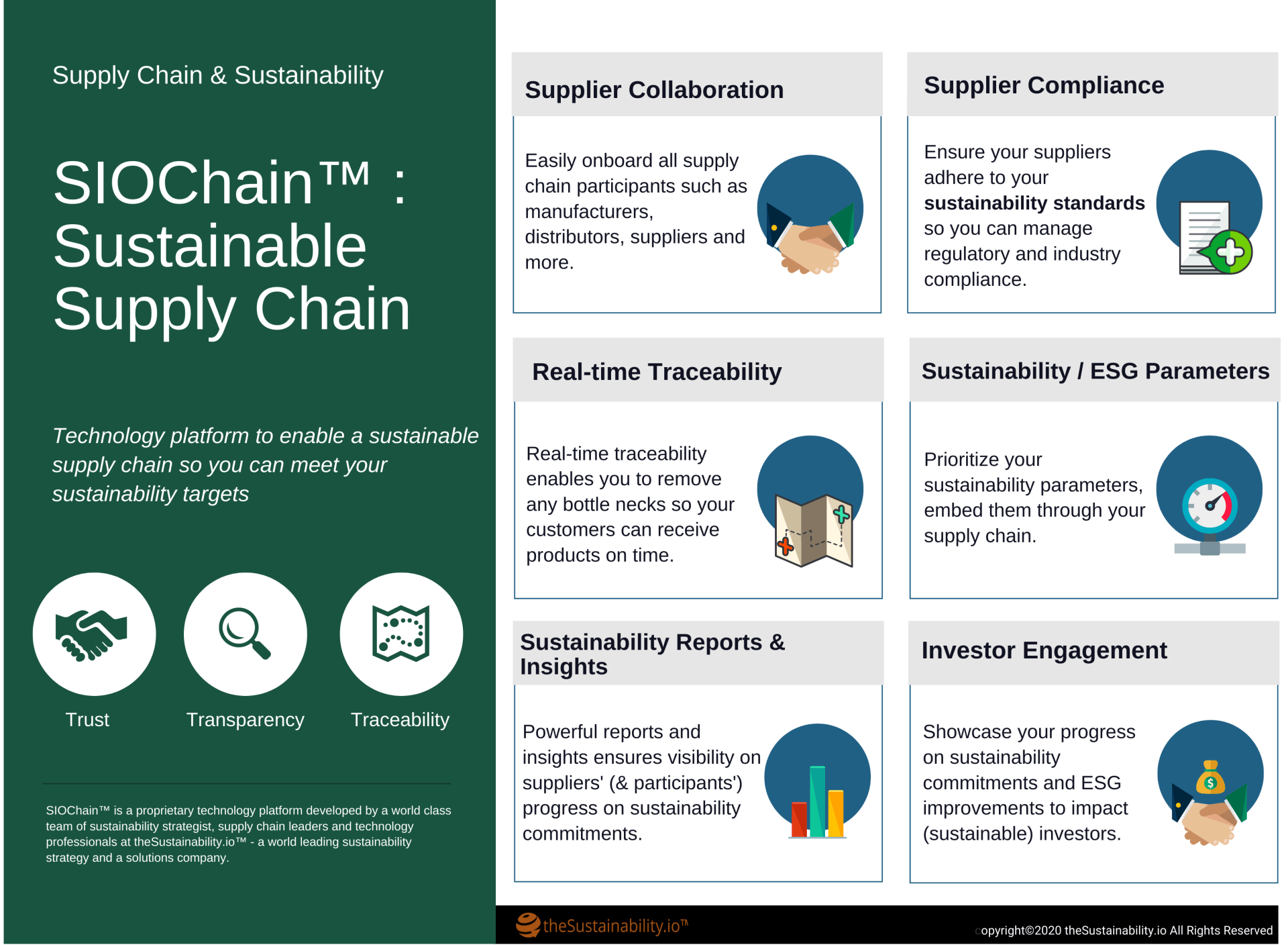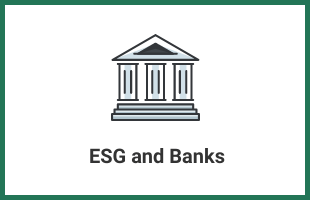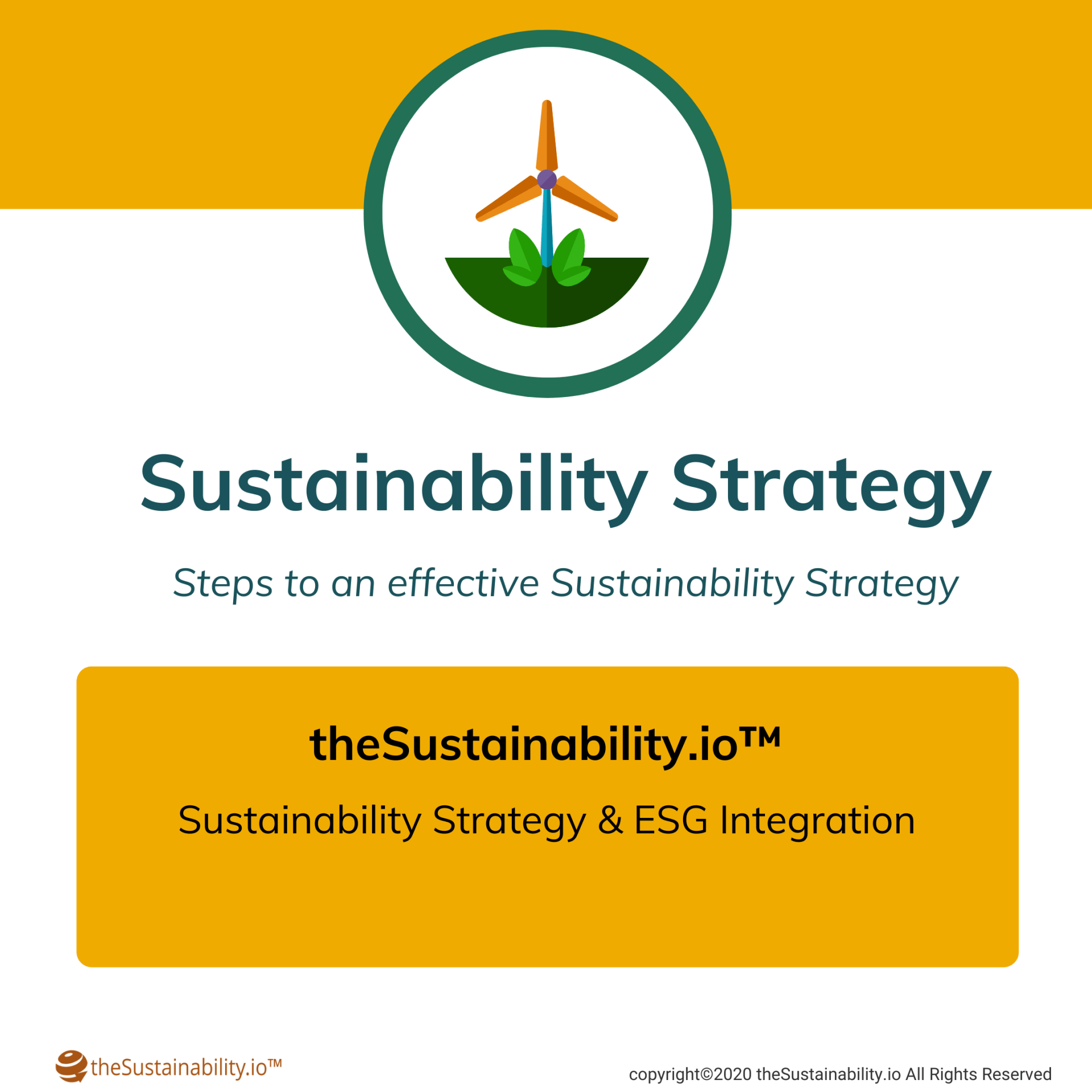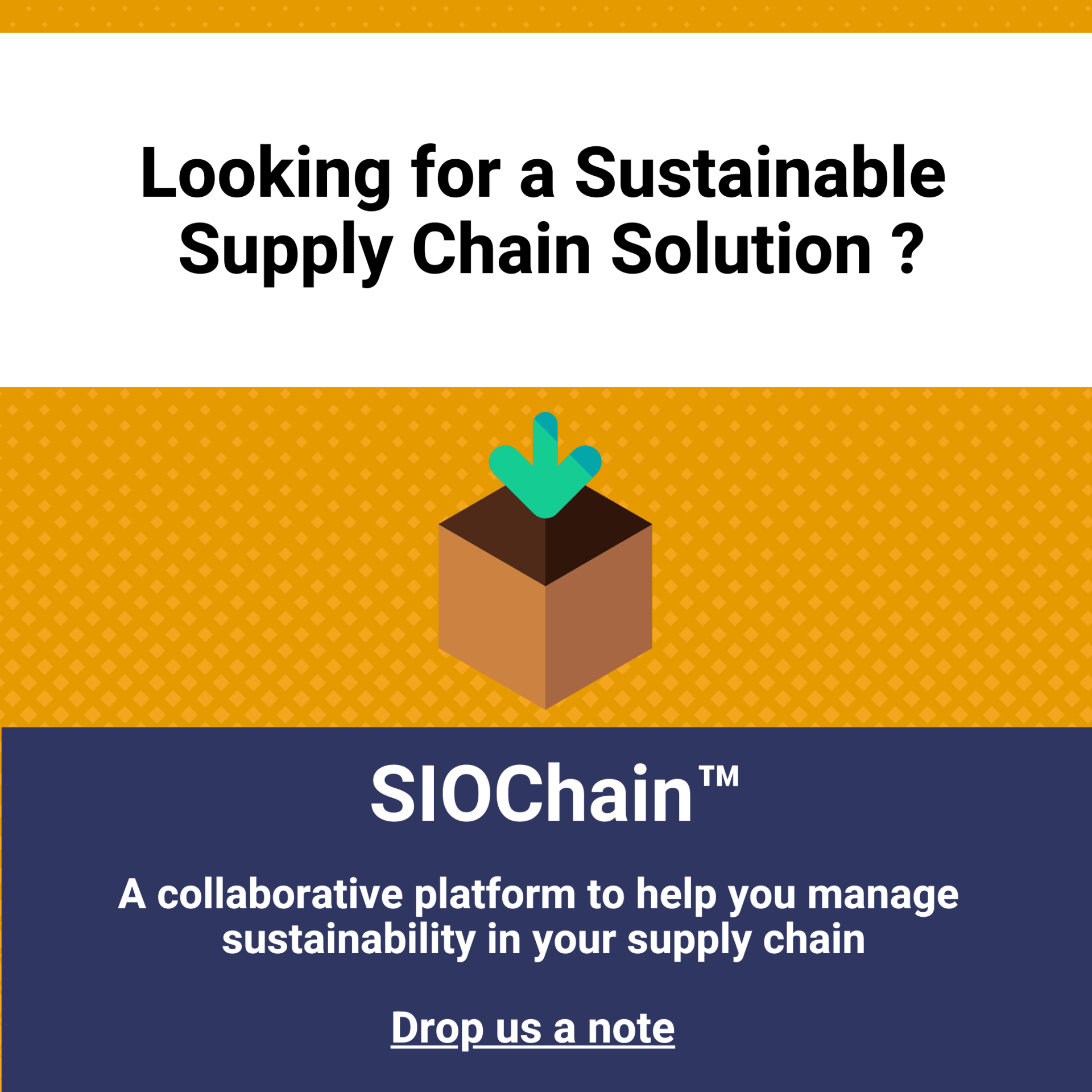Supply Chain Sustainability - an imperative for your ESG strategy
MACK BHATIA
Manage your ESG risks with SIOChain - Supply chain sustainability management system
Supply chain sustainability is a key component of your ESG strategy. Through supplier engagement, supplier recognition, and sustainable procurement, you can continue to improve your business practices and operations to manage risk while increasing productivity and efficiency within the supply chain. By working closely with suppliers, companies can manage their environmental and social impact and position themselves for stronger growth.
Pressure to support sustainability in supply chains is coming from multiple sources, including investors, government, and international bodies; with all of them also being the key drivers pushing companies to embed ESG focused business models and encourage ESG transparency and disclosures.
Executives are the most significant sources of pressure behind corporate commitments to supply chain sustainability across all issue areas; and supplier development, supply chain visibility, and environmental impact reduction are the three most common ways companies are putting their supply chain sustainability promises into practice.
Why is supply chain sustainability important for your business?
Among many reasons, the most important reason is that your ESG strategy and sustainability commitments, beyond your operations, are heavily dependent on your supplier or value chain network. In order to make your ESG strategy successful, it is imperative to engage your suppliers so all can adhere to the sustainability standards.
The second most important reason is to gather data aligned with your ESG metrics. When tracking supply chain sustainability standards, most companies start with data collection. This provides a strong picture of how contractors and suppliers are performing today and allows you to set goals to improve or set up baseline metrics. These metrics and data also contribute to your overall ESG goals or metrics so you can confidently disclose or report on your ESG progress
The third reason is, Investors and stakeholders are concerned about your supply chain sustainability practices and want to ensure that there aren’t any significant material risks associated with your value chain or which can hamper your operations or financials. SASB material map – highlights Supply chain sustainability as one of the key factors with a potential material impact (see here). And so, there is high pressure on executives to support supply chain sustainability (SCS).
Align with your ESG strategy
Your ESG strategy is a guideline to supply chain sustainability and gauging a supply chain's ESG performance level would be relative to the organization's needs within environmental, social, and governance (ESG) activities. Aligning your supply chain strategy with your ESG objectives shares the following benefits:
Manage Reputation Risks:
Getting insights into your supply chain sustainability is crucial as many companies are required to meet regulatory needs in the areas of operations. Tracking environmental and social parameters along the supply chain network helps mitigate reputation risks.
Environmental Data and ESG Metrics:
Gathering data from your supplier network is mandatory to get baseline metrics to improve upon. Government regulations, international bodies, and even investors expect proof that your supply chain network is not a material risk. Engaging your supply chain network also sends a strong signal to all your stakeholders on positive ESG progress.
Showcase Clean Revenues:
Your stakeholders, including the end consumer, wants to know that your revenues are coming from clean sources and not from unethical practices. ESG disclosure frameworks mandate reporting on ESG metrics through your value chain, a lack of which may be a risk to access to capital.
Align with your ESG strategy
SIOChain is a technology platform that
encourages collaboration
among you and your supplier network on sustainability and ESG standards and their adherence.
At its core it solves challenges faced by many (almost all) companies where the ESG teams or supply chain teams do not have the mechanism, tools, or capacity to engage, collaborate or collect data
as needed to meet ESG commitments, this is in the middle of ever-increasing executive and investor pressure.
SIOChain also provides a supplier scoring framework
so you can identify the most sustainable suppliers, share incentives, and vice versa. There is also a fantastic opportunity for you to access a network of green suppliers as they continue to join the SIOChain network.
We encourage you to have a chat with our team and see how
SIOChain, a robust supply chain sustainability management platform can work with you on your ESG success.
Reach out to us

Private equity firms are required to have an ESG strategy which is aligned to the limited partner’s ESG focus. Private equity industry is under greater scrutiny than ever before, and PE firms must do a better job of capturing and tracking the value they are creating and the impact of their activities.
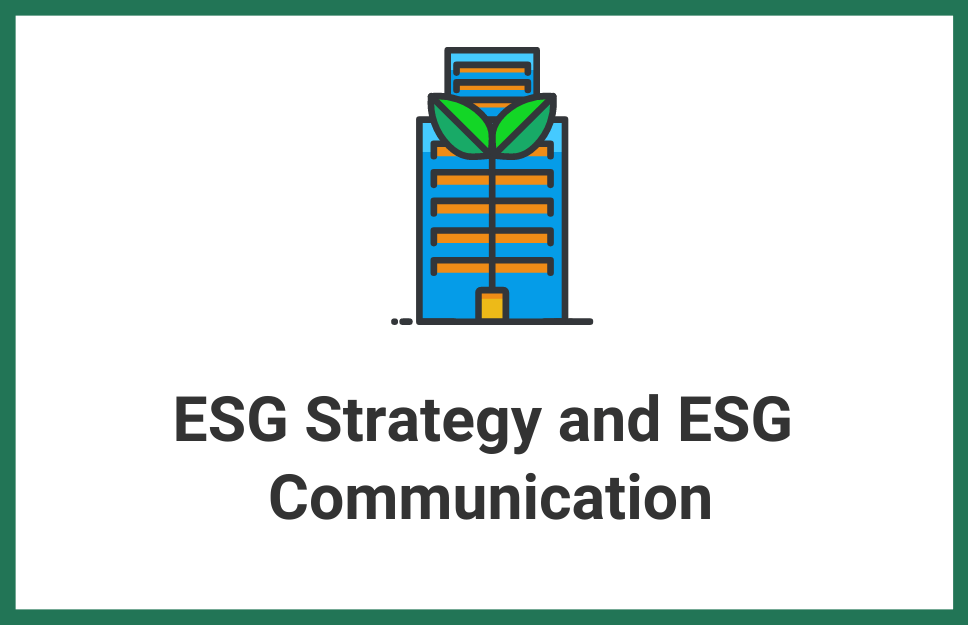
Our team provides services and due diligence to not only identify ESG opportunities but help our clients quantify potential ESG benefits and risks, incorporate ESG policies into the strategies and activities, facilitate transactions between asset buyers and sellers, and provide confidence among all parties that ESG commitments are made, and risks are managed.

It is very important that companies make sustainability and ESG a central component of their business model. “We know that climate risk is investment risk. But we also believe the climate transition presents a historic investment opportunity”, says Lary Fink from BlackRock. Authoritative statements like these present an opportunity for companies to prepare their business and our economy against the greatest global threats while it opens doors for capital access.
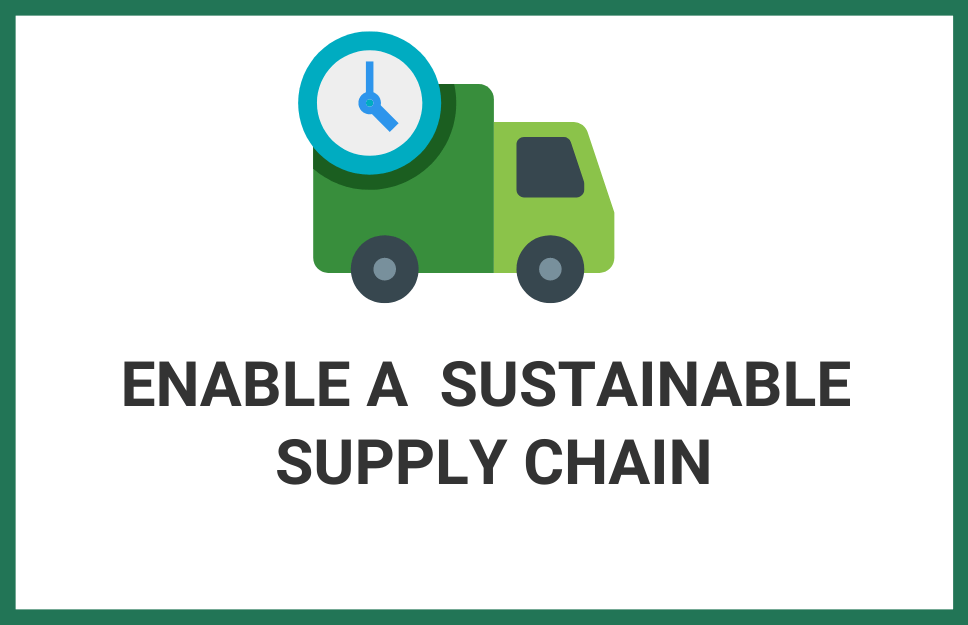
It is imperative to activate ESG and sustainability through the supply chain to develop transparency and visibility on ESG and sustainability practices. Companies need to collaborate with their suppliers and supply chain participants in upstream and downstream operations in order to meet their environmental and sustainability commitments. See more.

Effective communication with sustainable investors focused on your ESG progress is an important component of your ESG strategy. It fills the gap between investor expectations and your sustainability
or ESG strategy.Sustainability and ESG communication is an approach to engage your customers and
investors, and to showcase your ESG progress and sustainability commitments.

It is imperative to focus on supply chain sustainability in order to meet your sustainability commitments and meet your environmental targets. SIOChain™, a technology platform is designed to engage your suppliers and collaborate to measure, monitor and embed sustainability and ESG in your supply chain.
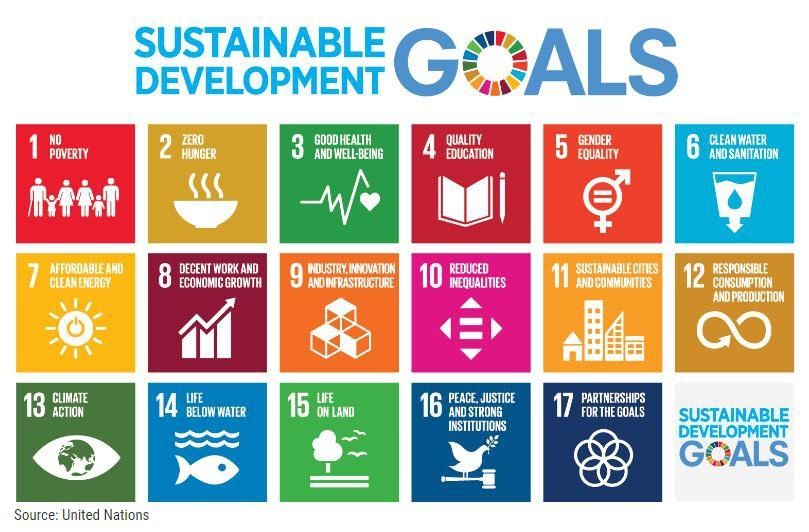
The purpose of sustainable financing, as stated by the UN Environment Programme , is to increase the level of financial flows (from banking, micro-credit, insurance and investment) from the public, private and not-for-profit sectors to sustainable development priorities. The aim is to align financial systems, working with countries, financial regulators and financial sectors, and direct capital allocation to sustainable development that will shape the production and consumption patterns of tomorrow. Financial mechanisms such as Green Bonds, Social Bonds and ESG Linked Loans help this alignment as they promote public-private partnerships for sustainable development. The Sustainable Development Goals (SDGs) are a collection of 17 global goals set by the United Nations General Assembly as an agenda for the year 2030. These 17 SDGs are an urgent call for action by developing and developed countries and provide a blueprint for the peace and prosperity for people and the planet. The SDGs also recognize issues related to the planet, such as biodiversity, and to people, such as poverty, and accept that solutions to address all of these issues are interconnected. Green Finance (or Sustainable Finance) instruments such as Green Bonds, and bonds focused on other thematic issues such as Social Bonds, Sustainability Bonds or Sustainable Development Goal Bonds, can act as a strong bridge to the SDGs. Such initiatives allow the flow of capital to execute and meet corporate sustainability commitments. They are also attractive to institutional investors as they perceive financial commitments to sustainability as a good indicator of a corporation's ESG progress. Related: More about Social Bonds

